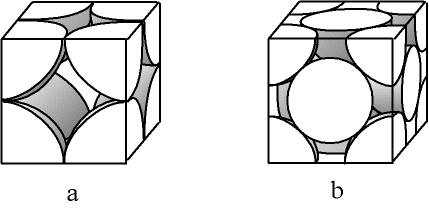Hello from France !
I can provide to you some tip-n-tricks.
Most of the common stainless steel alloys are today "austenitic" grades. As per AISI nomination rules, it's the famous 3-hundred class.
304L is called in nuts & bolts "A2".
316L is usually called in bolts & nuts "A4".
Some improvements of these austenitic family have been made since decades. 303, 321, 318, 309...
BUT
The suffix "-L" stands for "extra-Low Carbon content".
The suffix "-H" stands for "Hard", meaning much more carbon content.
See here :
Austenitic steels are similar to copper.
Austenite is a crystal able to dissolve/contains LOTS of carbon, because the periodic item contains up to 14 atoms into the cubic item; which reapeats billions of times.
The common and rusty steels are ferritic steels. They contains only 9 atoms per item; as the famous "Atomium" monument near Brussels, Belgium shows. With 9 atoms, the basic items can't contains lots of carbon. that's why most of cemeted "carbon" steels are showing under microscope some aggregates of nearly-pure iron, called ferrite. And plumets of carbide tri-iron, Fe3C, called martensite.
The results are a mix of ferrite, and perlite (ferrite which contains "plummets" or "feathers of martensite.
With the stainless steels of the 3-hundred class, consider that you are machining copper.
Why it is important to think like this ?
Because copper is a soft, ductile material. If you pick an hammer, it is VERY EASY to dent copper, even with a soft hammering.
Stainless is also a soft and ductile metal, but it's content of carbon is not really creating an harder alloy : the carbon is able to disperse; so it's not +0,5% of content that will change its properties.
The issue is ...in your kitchen. If you are picking a spoon, they are usually made of austenitic steel.
If you bend the spoon, you will sense heat formation at the bending site.
If you bend on the other direction, the manual effort becomes much more difficult.
The heat is also generated.
If you bend more, or changing the direction of effort, the stainless steel spoon becomes very hard to bend, if you are pursuing your efforts, the spoon will break in two parts.
This phenomenon is called "work hardening".
That's why a "cold drawn steel" is much, much more stiff than "hot-rolled steel".
The more you are deforming the stainless steel, the more you are dividing the small grains of the matter, creating lots of crystal dislocations.
When you are machining stainless steel, the curved swarf is then MUCH MORE harder than the base material. And the heat is transferred into the sharpe edge, very high temperatures will lead to loss of sharp edges of the cutting tool.
The cold drawing hardening can only be cancelled by powerful heating. In this case, we are dealing with the scarf. The hotter it will be, the softer it will behaves. Red-hot ones are softy.
So, one of the trick is to use ...garlic's juice, from the cloves. It contains diallyl disulfide and its related compound.
The garlic contains plenty of sulfur-based compounds. When pouring this liquid, its cools the carbide insert or the HSS edge. But in the stainless steel dislocations network, the sulfur can be added INTO the swarf.
...leading to embrittlement of the swarf. The rest of base material is not under dislocation or cold drawing, so there is no alteration by sulfur.
Best regards.
And
désolé for the powerful-n-infamous smell that will escape from your workshops. It will pursue you days and nights.
Garlic is a very rich sulfur-containing plant,
avoid to send to your skin the juice, its contents will burn you badly.
It can leads to permanent conditions (allergies, and diallyl disulfide/garlicin can be deadly when handled in large quantities !


